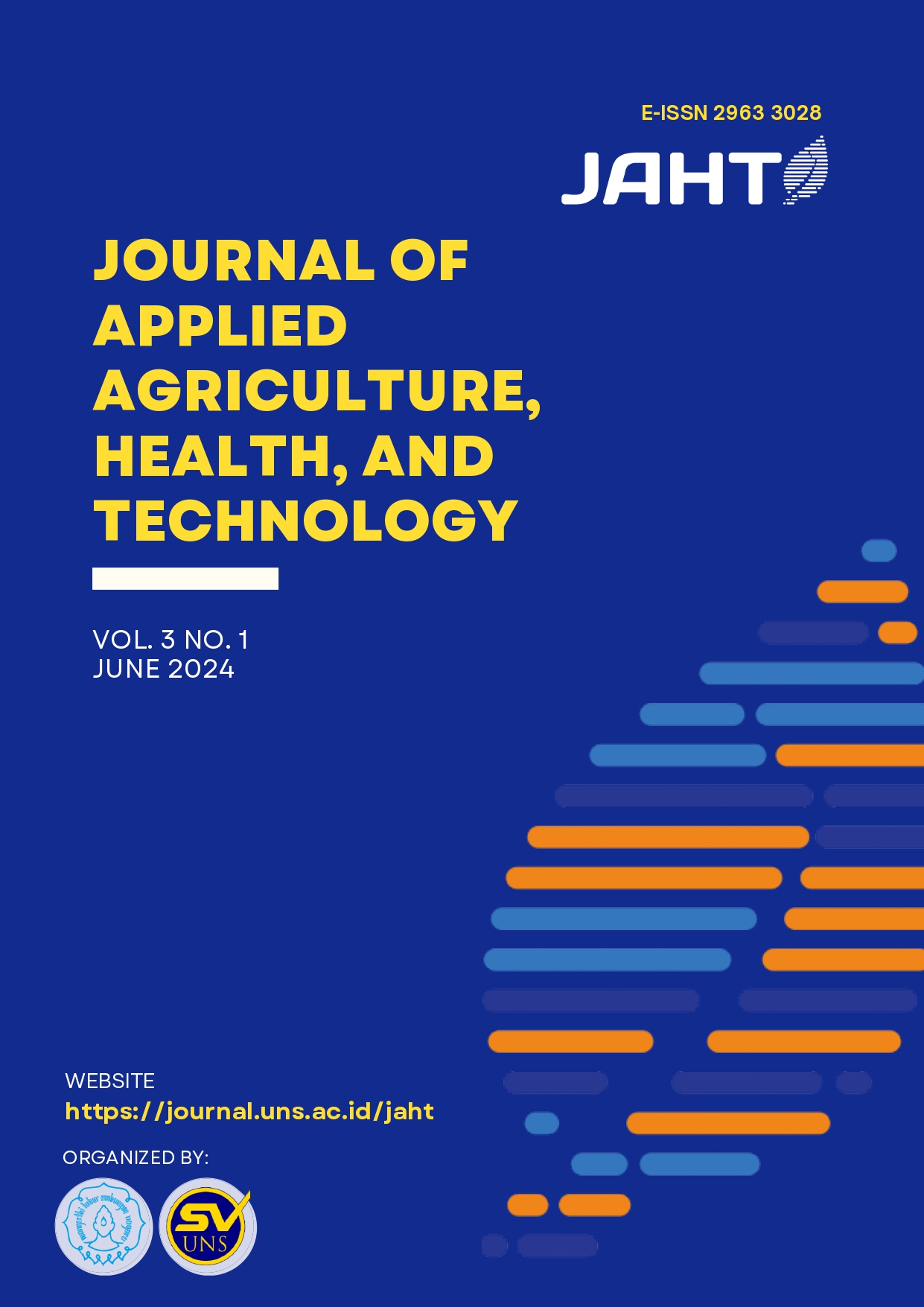Hubungan Suhu dan Kelembaban Udara dan Intensitas Pencahayaan Dengan Sick Building Syndrome di SMA Negeri 3 Surakarta
DOI:
https://doi.org/10.20961/q98s2n81Keywords:
air humidity, light intensity, room temperature, school, sick building syndromeAbstract
Sick Building Syndrome is a health symptom that is related to how long room occupants spent their time doing activities in a room. Several sick building syndrome symptoms were found among students of State Senior High School 3 of Surakarta like headache and sleepiness. The aim of this study was to analyze the relationship between the temperature, air humidity and light intensity of the classrooms with sick building syndrome symptoms on the students. The population were the students of grade XI and XII with the total of 840 students and the sample of 90 students taken using the random cluster sampling method. The measuring devices used were room thermometer, hygrometer, lux meter and SBS questionnaire. Termometer to measure temperature, a hygrometer to detect humidity, a luxmeter to measure illumination, and an SBS questionnaire to assess SBS symptoms. Rank Spearman correlation test was used to measure the correlation between room temperature, air humidity and light intensity with sick building syndrome symptoms found on students. The result of correlation test between room temperature with sick building syndrome showed a significant correlation with p value = 0,004 and r value = 0,402. The result of correlation test between air humidity with sick building syndrome showed a significant correlation with p value = 0,003 and r value = 0,440. The result of correlation test between light intensity with sick building syndrome showed a significant correlation with p value = 0,001 and r value = -0,683. This study concluded that there was a significant correlation between room temperature, air humidity, and light intensity with with sick building syndrome symptoms on the students of Senior High School State of 3 Surakarta.
References
[1] World Health Organization. Ambient (outdoor) air pollution. Accessed: Mar. 03, 2023. https://www.who.int/news-room/fact-sheets/detail/ambientoutdoor-air-quality-and-health
[2] Mawarni FM, et al. Keluhan Sick Building Syndrome di Gedung PT. X. Jurnal Kesehatan Lingkungan Indonesia. 2021;20(1):39–46. doi: 10.14710/jkli.-20.1.39–46.
[3] World Health Organization. More than 90% of the world’s children breathe toxic air every day. Accessed: Dec. 18, 2023. https://www.who.int/news/item/29-10-2018-more-than-90-of-the-worlds-children-breathe-toxic-air-every-day
[4] Kosif R, Keçialan R. Anatomical Differences between Children and Adults. International Journal of Scientific Research and Management. 2020;8(5):355–359. doi: 10.18535/-ijsrm/v8i05.mp02.
[5] Menteri Kesehatan Republik Indonesia. Peraturan Menteri Kesehatan Republik Indonesia Nomor 48 Tahun 2016 Tentang Standar Keselamatan Dan Kesehatan Kerja Perkantoran. Menteri Kesehatan Republik Indonesia, Jakarta. 2016.
[6] Badan Standardisasi Nasional. Standar Nasional Indonesia 6197 : 2020 Tentang Konservasi energi pada sistem pencahayaan. Badan Standardisasi Nasional, Jakarta. 2020.
[7] Priyono. Metode Penelitian Kuantitatif. Zifatama Publishing. 2016.
[8] Raw GR. A questionnaire for studies of sick building syndrome: A report toThe Royal Society of Health Advisory Group on sick building syndrome. UK. 1995.
[9] Nag PK. Office Buildings. Singapore: Springer Singapore. 2019. doi: 10.1007/978-981-13-2577-9.
[10] Bardi NK. Fachrin SA, Arman, Nurlaila T. Faktor yang Berhubungan dengan Keluhan Sick Building Syndrome Pegawai PLN UIW Sulselrabar Kota Makassar. Window of Public Health Journal. 2021;1(6):692–700. doi: 10.33096/woph.v1i6.165.
[11] Murniati N. Hubungan Suhu dan Kelembaban dengan Keluhan Sick Building Syndrome pada Petugas Administrasi Rumah Sakit Swasta X. Jurnal Ilmu Kesehatan Masyarakat. 2018;7(3):148–154. doi: 10.33221/jikm.-v7i3.123.
[12] Hunter DJ. At Breaking Point or Already Broken? The National Health Service in the United Kingdom. New England Journal of Medicine. 2023;389(2):100–103. doi: 10.1056/NEJMp2301257.
[13] Potter PA, Perry AG. Fundamentals of Nursing, 9th ed. Elsevier Health Sciences. 2016.
[14] Boyce PR. Human Factors in Lighting: Third Edition, 3rd ed. CRC Press. 2014.
[15] Indarwati S, Respati SMB, Darmanto D. Kebutuhan Daya Pada Air Conditioner Saat Terjadi Perbedaan Suhu dan Kelembaban. Jurnal Ilmiah Momentum. 2019;15(1). doi: 10.36499/jim.v15i1.-2666.
[16] Billman GE. Homeostasis: The Underappreciated and Far Too Often Ignored Central Organizing Principle of Physiology. Front Physiol. 2020;11. doi: 10.3389/fphys.2020.00200.
[17] Juliana N, Mallongi A, Megasari WO. Analysis Of Humidity, Temperature, Working Period, And Personal Protective Equipment in Home Industry at Gold Craftsmen. Jurnal Ilmu Kesehatan. 2021;9(2):81–89. doi: 10.30650/jik.v9i2.2995
[18] The British Medical Association. Illustrated Medical Dictionary: 4th Edition. London: Dorling Kindersley Books. 2018











